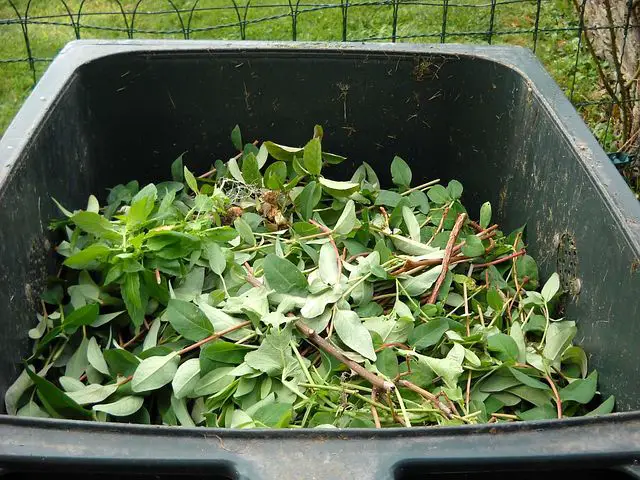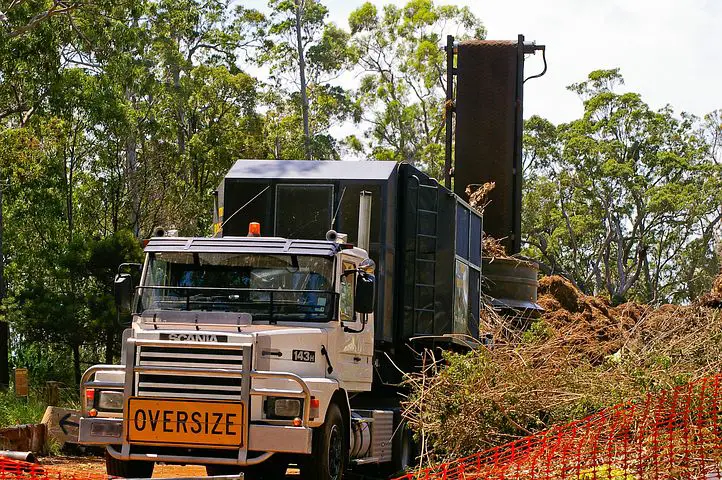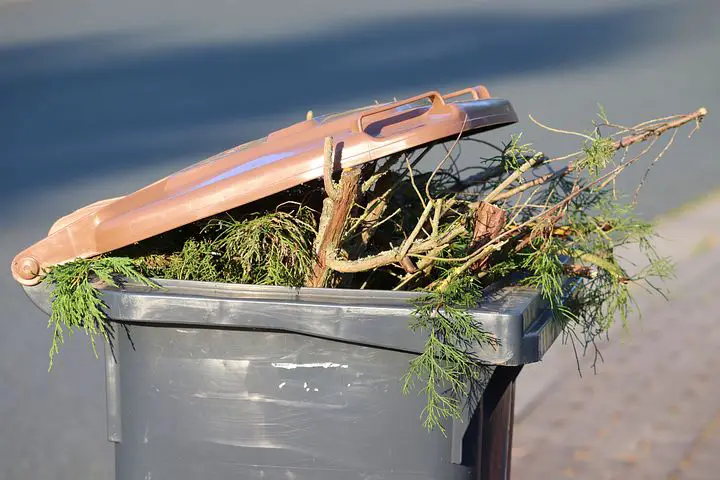Green waste, also known as yard waste, refers to organic waste that is generated from landscaping and gardening activities. It includes things like grass clippings, leaves, branches, twigs, weeds, and other plant debris. Green waste can be composted or mulched to create a nutrient-rich soil amendment for gardening and landscaping.
Green waste can be collected separately from other types of waste and taken to a composting facility, where it can be turned into compost that can be used for gardening and landscaping. Some municipalities offer curbside collection of green waste, while others may require residents to take their green waste to a drop-off location.
Composting green waste can have a number of environmental benefits. It reduces the amount of waste that goes to landfills, which can contribute to greenhouse gas emissions. It also helps to conserve water, reduce the need for synthetic fertilizers, and promote healthy soil.
Additionally, composting can help to reduce the risk of wildfires by removing dry and combustible plant material from yards and other areas.
Green waste, which includes yard waste and food waste, is a biodegradable material that can be recycled and turned into useful products such as compost or mulch.
Ways To Manage Green Waste Properly

Proper management of green waste not only helps reduce landfill waste but also benefits the environment by reducing greenhouse gas emissions and improving soil quality. Here are some ways to manage green waste properly:
(1) Composting
Composting is the process of breaking down organic material into a nutrient-rich soil amendment. This can be done at home using a compost bin or pile, or through municipal composting programs. Composting can help reduce landfill waste and create a sustainable source of fertilizer for plants.
Composting green waste is a great way to reduce the amount of waste sent to landfills and create a valuable soil amendment for your garden or landscape. Green waste includes materials such as grass clippings, leaves, and plant trimmings.
Here are the steps to composting green waste:
Choose a location: Choose a location for your compost pile or bin. It should be in a spot that is convenient for adding material and turning the compost.
Add green waste: Add your green waste to the compost pile or bin. It’s important to create a balance of green and brown materials to promote decomposition. Green materials are high in nitrogen and include grass clippings, leaves, and plant trimmings. Brown materials are high in carbon and include dried leaves, straw, and wood chips.
Add water: Moisture is important for composting, so water your compost pile regularly. The compost should be moist, but not waterlogged.
Turn the compost: Turning the compost helps to mix the materials and promote decomposition. You can use a pitchfork or shovel to turn the compost every few weeks.
Wait for the compost to mature: The composting process can take several months to a year. When the compost is dark and crumbly and has a pleasant earthy smell, it’s ready to use.
Use the compost: Use the compost as a soil amendment in your garden or landscape. It’s a great way to add nutrients to the soil and improve soil structure. Remember that composting requires a bit of patience and effort, but the end result is worth it. Happy composting!
Read Also: Dog Wastes Complete Management Guide
(2) Mulching
Mulching involves spreading a layer of organic material, such as leaves or grass clippings, over the soil around plants. Mulch helps retain moisture, suppress weeds, and improve soil quality by adding organic matter as it decomposes.
Mulching green waste is a great way to recycle and repurpose plant materials, such as leaves, grass clippings, and small branches. Mulch is a layer of organic material applied to the soil surface around plants to help retain moisture, regulate temperature, suppress weeds, and improve soil health.
To mulch green waste, you can use a shredder or chipper to break down the materials into smaller pieces. You can also use a lawn mower with a bag attachment to collect and chop leaves and grass clippings. Once the green waste is shredded, you can spread it over your garden beds or around your plants, leaving a gap of a few inches around the base of each plant to prevent moisture buildup and reduce the risk of disease.
Mulching green waste provides a number of benefits, including:
Water conservation: Mulch helps retain soil moisture, reducing the need for watering.
Weed suppression: Mulch can help suppress weed growth by blocking out sunlight and inhibiting weed seed germination.
Soil improvement: As the mulch decomposes, it adds organic matter to the soil, improving its structure and fertility.
Temperature regulation: Mulch can help regulate soil temperature, keeping roots cool in hot weather and protecting them from frost in cold weather. Mulching green waste is a simple and effective way to recycle plant materials and improve the health and productivity of your garden.
(3) Vermicomposting
Vermicomposting is a type of composting that uses worms to break down organic material. This can be done at home using a worm bin or through municipal programs. Vermicomposting can be especially effective for processing food waste.
Vermicomposting is the process of using worms to break down organic material, such as green waste, into nutrient-rich compost. Green waste includes items such as grass clippings, leaves, and food scraps. Vermicomposting is an effective and sustainable way to manage green waste, as it produces a high-quality fertilizer while reducing the amount of waste sent to landfills.
To start vermicomposting green waste, you will need a worm bin, which can be purchased or made at home. The worm bin should have a bedding material, such as shredded newspaper or coconut coir, and some red worms. The worms will eat the green waste and bedding material and turn it into compost.
Here are the steps to vermicompost green waste:
Collect green waste: Collect green waste such as grass clippings, leaves, and food scraps.
Shred the green waste: Shred the green waste into small pieces to speed up the composting process.
Add bedding material: Add bedding material, such as shredded newspaper or coconut coir, to the worm bin.
Add green waste: Add the shredded green waste to the worm bin, making sure it is evenly distributed.
Add worms: Add red worms to the worm bin. The number of worms needed will depend on the amount of green waste being composted.
Maintain the worm bin: Keep the worm bin moist but not too wet. The bedding material should be damp but not soggy. Add additional bedding material and green waste as needed.
Harvest the compost: After a few months, the compost will be ready to harvest. Remove the finished compost from the bottom of the worm bin and use it as a fertilizer for your plants.
Remember to avoid adding meat, dairy, and oily foods to the worm bin, as these can attract pests and slow down the composting process. With proper care, vermicomposting green waste can produce high-quality compost for your garden while reducing waste sent to landfills.
Read Also: Grey Water Complete Management Guide
(4) Grasscycling
Grasscycling involves leaving grass clippings on the lawn after mowing. The clippings break down and return nutrients to the soil, reducing the need for fertilizer. Grasscycling is the practice of leaving grass clippings on the lawn after mowing instead of collecting and disposing of them. This helps to reduce the amount of green waste that ends up in landfills, and it also provides several benefits for your lawn and the environment.
When grass clippings are left on the lawn, they break down and release valuable nutrients back into the soil, including nitrogen, potassium, and phosphorus. This can help to reduce the need for fertilizer and improve the overall health of the lawn. Grass clippings also act as a natural mulch, helping to retain moisture in the soil and reduce weed growth.
In addition to the benefits for your lawn, grasscycling can also have environmental benefits. When green waste is sent to landfills, it decomposes and produces methane, a potent greenhouse gas that contributes to climate change. By leaving grass clippings on the lawn instead of sending them to the landfill, you can help to reduce the number of greenhouse gases produced.
To grasscycle effectively, it’s important to mow regularly and not remove more than one-third of the grass blade at a time. This will help to ensure that the clippings are small enough to decompose quickly and won’t smother the lawn. It’s also a good idea to use a mulching mower, which cuts the grass into smaller pieces and distributes them evenly across the lawn. Grass cycling is a simple and effective way to reduce green waste, improve the health of your lawn, and benefit the environment.
(5) Curbside pickup

Many municipalities offer curbside pickup of green waste, which is then taken to a composting facility. Check with your local waste management agency to see if this service is available in your area.
Curbside pickup of green waste is a service offered by some municipalities and waste management companies to help residents dispose of organic materials such as leaves, grass clippings, branches, and other yard trimmings. The purpose of this service is to divert these materials from the landfill and instead turn them into compost or other useful products.
To use curbside pickup of green waste, residents typically place their yard trimmings in designated containers, such as green waste bins, and leave them at the curb on specified collection days. Some municipalities may have restrictions on the types of materials that can be included in green waste, so it’s important to check the guidelines before using the service.
Using curbside pickup of green waste can have several benefits, including reducing the amount of waste sent to landfills, reducing greenhouse gas emissions, and creating a valuable resource for use in agriculture and landscaping. Additionally, it can be a convenient and easy way for residents to dispose of their yard trimmings without having to transport them to a drop-off location.
(6) Drop-off locations
Some cities or counties offer drop-off locations for green waste. This allows residents to bring their yard waste or food scraps to a designated facility for composting. Green waste drop-off locations can vary depending on your location, but here are some general places to check:
Local Recycling Centers: Many cities and towns have designated recycling centers where you can drop off your green waste. Check with your local government or waste management department to find out where your nearest recycling center is located.
Composting Facilities: Some cities and towns have composting facilities that accept green waste. These facilities turn green waste into compost, which can then be used for gardening and landscaping. Check with your local government or waste management department to find out if there are any composting facilities in your area.
Landfills: Some landfills accept green waste, but this option should be used as a last resort as it is not the most environmentally friendly option. Check with your local landfill to see if they accept green waste.
Local Mulching Services: Some landscaping companies and garden centers offer green waste drop-off or mulching services. They may charge a fee, but this is a convenient option if you have a large amount of green waste to dispose of.
Curbside Pickup: Some cities and towns offer curbside pickup of green waste. Check with your local government or waste management department to see if this service is available in your area. Remember to always check with your local government or waste management department for specific guidelines and rules for green waste disposal in your area.
Overall, managing green waste properly requires a combination of individual and community efforts. By reducing, reusing, and recycling green waste, we can help create a more sustainable future for our planet.
Read Also: The Impact of Stress on Your Health and How to Manage It

